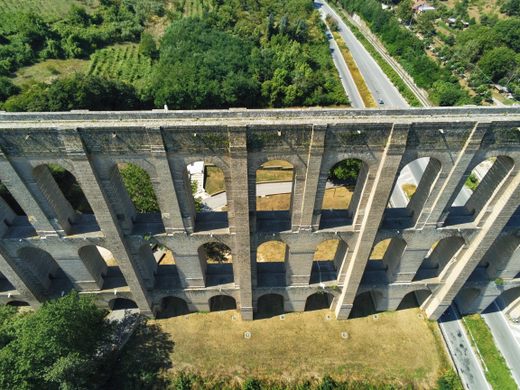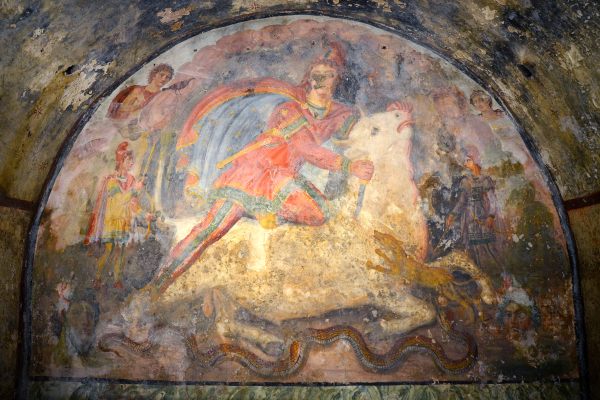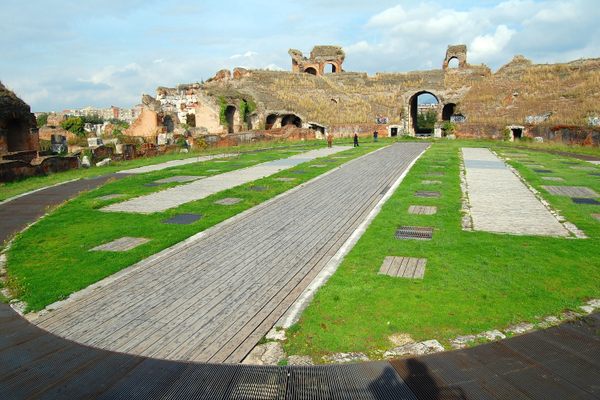Ponti della Valle di Maddaloni
A massive bridge forms part of an aqueduct that was deemed an architectural wonder of its time.
One of the most iconic places in the Royal Palace of Caserta is the waterfall located behind the building., but the water did not flow in naturally from the surrounding hills to feed falls.
In 1753, work began on an aqueduct to supply water to the Royal Palace of Caserta and the nearby San Leucio complex began. It was designed by Luigi Vanvitelli, who also designed the Royal Palace and was commissioned by the King of Naples Charles VII. The work was named Acquedotto Carolino (Caroline Aqueduct) in honor of the king. When the aqueduct was completed in 1770, it was considered one of the greatest architectural and engineering works of the 18th-century.
The water came from the springs of the Fizzo River of Mount Taburno and was transported mostly underground. The most impressive part of the aqueduct is the 1,736 foot (529-meter) long tufa bridge over the Maddaloni valley, between Mount Longano and Mount Gargano.
The bridge is modeled after the ancient Roman aqueducts and is composed of three tiers of arches, with an overall height of almost 183 feet (56 meters). At the time of completion, it was the longest bridge in Europe and is still perfectly preserved, while having survived several strong earthquakes that hit the area over the centuries.
Under the bridge, an ossuary contains the remains of soldiers who died during the Battle of the Volturno between the army of Giuseppe Garibaldi and the Kingdom of the Two Sicilies in 1860, during the Expedition of the Thousand. Two other smaller bridges cross the surrounding valleys before finally reaching the hills over Caserta.
















Follow us on Twitter to get the latest on the world's hidden wonders.
Like us on Facebook to get the latest on the world's hidden wonders.
Follow us on Twitter Like us on Facebook